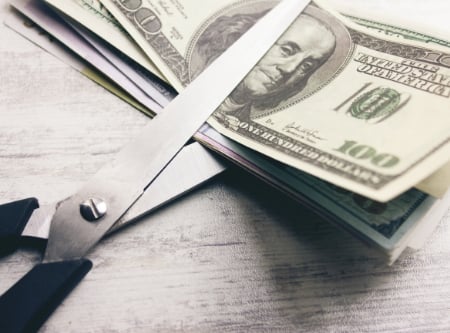
As you may have heard, the Federal Reserve recently cut its benchmark lending rate, and many are wondering how this affects their financial situation.
What happened?
The Federal Reserve made a significant move by cutting its benchmark interest rate by 0.50%, lowering it to a target range of 4.75%-5.00%. This is the first rate cut since 2020, following a period between March 2022 and July 2023 of rapid rate increases designed to combat inflation.
The rate reduction is expected to relieve some of the financial pressure that consumers have experienced in recent years. After some initial wobbliness, markets digested the cut positively, with the Dow and S&P 500 hitting record highs the day after the large rate cut. Federal Reserve Chair Jerome Powell’s “recalibration” commentary after the Sept. 18 rate cut announcement was deemed as the reason for soaring asset prices on Sept. 19.
Why is it significant?
After the Federal Reserve increases rates to combat inflation, the next key step is to reduce those rates to avoid an economic slowdown. Lower rates too soon, and inflation could come back. Lower rates too late, and a recession could occur.
From a consumer’s perspective, rate cuts like this tend to lower borrowing costs for products like mortgages, auto loans, savings rates and credit cards.
Mortgage Rates / Home Equity Lines
Mortgage rates have already started to decline in anticipation of the rate cut, and they could continue to drop. If you’re considering buying a home or refinancing your mortgage, now might be a good time to act, as rates are expected to remain lower in the near future.
- In 2020 you could purchase a $500,000 home, with 20% down at 3% (a $400,000 mortgage) and your payment would be around $1,680 per month (Principal and Interest)
- If you were to purchase the same home in 2024 with 20% down at 6.5% (a $400,000 mortgage) your payment would be around $2,500 per month (Principal and Interest)
- When rates are cut, it is beneficial for home buyers and homeowners. There is a possibility of being able to refinance a high interest mortgage or take out a Home Equity Line at a lower rate.
CDs / Money Markets / Personal Savings Accounts
As the Fed begins to cut rates you might notice the appealing rates that CDs have been offering are no longer around.
Money Market rates have been especially attractive as in most cases there is no penalty to transfer money in and out of these funds so there is more potential for a consumer to earn more interest. Some consumers have been using money market funds in place of bonds; however, if you have cash that will be around for the longer term, you should be thinking about shifting those funds back to bonds as money market rates decrease.
Auto Loan Rates
When rates are cut, consumers have the ability to refinance auto loans at a lower rate and there are typically more attractive offers from the dealerships for financing and leasing.
Are more rate cuts coming?
The Fed has indicated that more rate cuts could be on the horizon. Some analysts predict rates could drop to 4.00%-4.25% by the end of the year, though the Fed is currently signaling the benchmark rate will end the year at 4.25%-4.50%.
